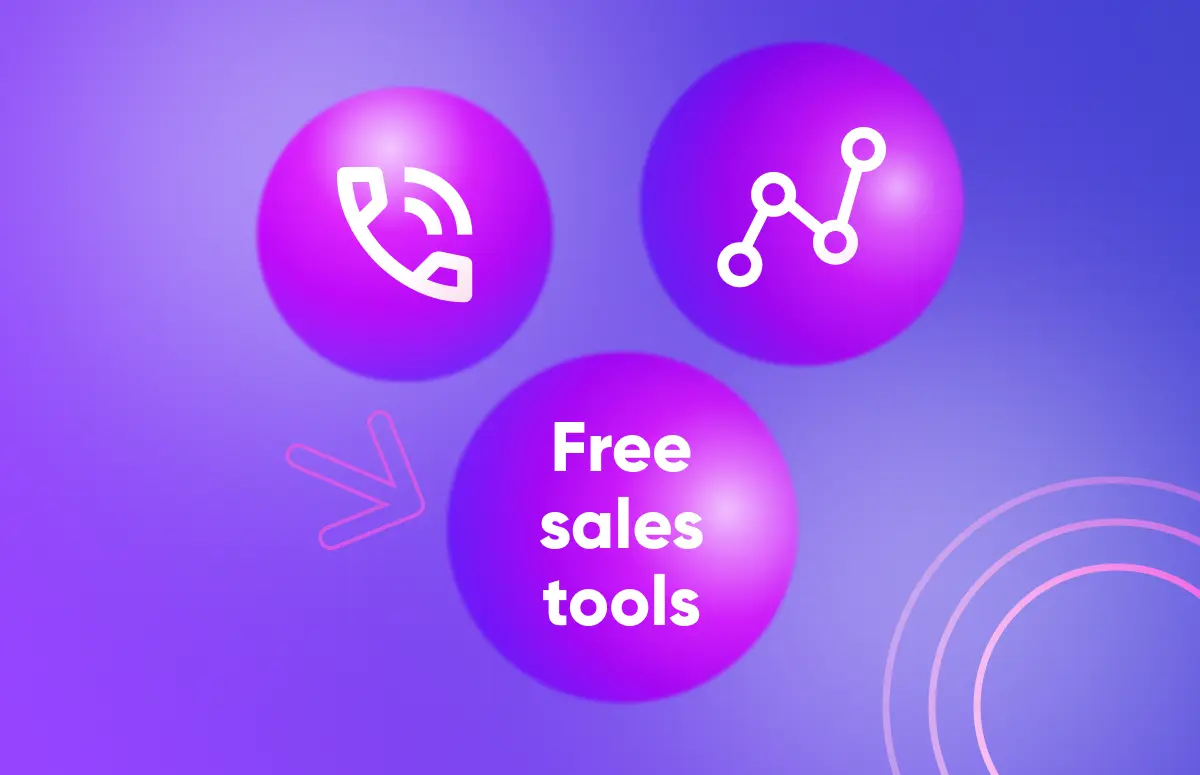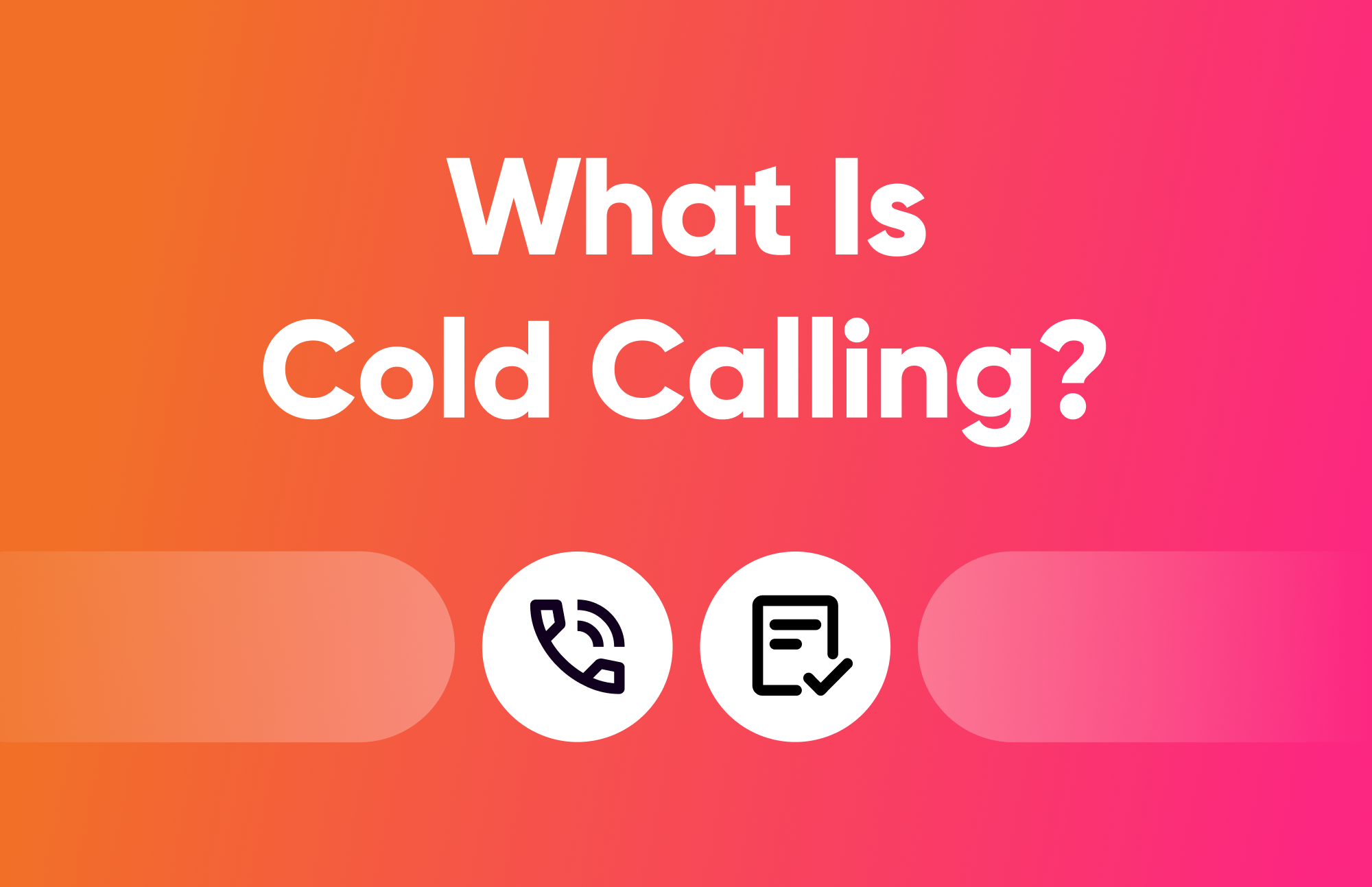
B2B buying behavior has changed. 💯
And it’s never going back to how it was before…
This means prospecting needs to change with it.
TL;DR
- Prospecting is just another channel, not the only one. A value-based selling approach recognizes that sellers need to make human-to-human relationships.
- Sales professionals need to be subject matter experts (SMEs). You’ve got to become a master of your product and talk to potential buyers on their level.
- You need to focus on the prospective client and their needs. Sales calls need to be taken from a nuisance to a value-add.
When you were selling ten years ago, there was:
- Less competition.
- Fewer channels for research and comparison.
- More need to speak to a sales rep as they were the gatekeepers of info.
- Less access to self-service.
- Fewer free trial or freemium options.
Buyers hold more power now:
- Studies from WBR Insights have shown prospects wait until they’re 57-70% of the way through researching a product before speaking to sales.
- Self-service and product-led growth (PLG) means, in some cases, they don’t even need to speak to a human.
You could say it’s been a long time coming. 😤
And you would be right.
Digital transformation is a key driver of this behavior change. And that has been spoken about for literally ages.
But unpicking years and years of traditional tactics is never easy. It’s finally time for the approach to sales to catch up.
So, what does this mean for outbound lead generation and prospecting?
Prospectors must create unique value and offer buyers something they can’t get anywhere else.
Value-based selling needs to become the norm. 👇

What is value-based selling, anyway?
Value-based selling focuses on the prospect and their needs rather than the solution you’re trying to sell. It’s a technique used in B2B prospecting to nurture, build relationships, and ultimately help buyers make the right purchasing decisions.
Some of the key principles of value-based selling include:
- A buyer-centric approach. There’s a deep understanding of the pain points and objectives of the prospect.
- Focus on value. The sales rep doesn’t push a sale solely based on features or pricing. In value-based selling, the focus is on what the product gives the buyer.
- Personalization. Solutions aren’t pushed if they are not right or won’t give an adequate return on investment (ROI).
- Long-term relationships. Value-based selling is a long-term approach. The SDR recognizes that not everyone will be ready to buy right now (and some not ever!), and that’s okay - they know where to invest their time.
Why value selling is important
Prospecting is just another channel (not the only one).
“I’d LiKe tO sPeAK to SOmEoNe!!!” is only reserved for Karen these days.
Just kidding…
But research from Gartner says that 72% of clients prefer a rep-free experience in B2B. Those surveyed said they didn’t see the relevance of speaking to a seller or how it would help them achieve their objectives. 😱
Buyers have access to so much information now
Buyers have got access to information everywhere, at any time that suits them.
They can look at it in their preferred medium too.
Whether that is:
- A TikTok video.
- A review site.
- A Reddit thread.
- A LinkedIn text post.
- A podcast.
- A company website.
You get the picture. The list goes on and on.
There’s also the psychology of sleazy sales tactics to contend with. For most people, it’s deeply ingrained that there’s something deceptive about salespeople. This idea goes back to when door-to-door sales was the only way, as there was little access to other information.
At this time of limited info, there was also a focus on high-volume outbound. This quantity over quality trade-off was to the detriment of the buyer experience. People didn’t buy through outbound because they wanted to; they bought through outbound because they had to.
For outbound sales to be successful, you need to provide more value than any other channel. And you need to communicate this value to the prospective client effectively.
Recognizing the value in outbound
The majority of companies don’t recognize the opportunity of focusing on quality in outbound.
A more personalized and relevant first-touch approach will likely lead to more closed deals. And larger closed-won deals, too. 🤑
So why aren’t most people doing it? Well, it’s never easy to move away from old methods.
Here are some ways to shift in this new direction.
Making human-to-human connections
Value-based selling is partly about building relationships.
At the end of the day, people buy from people.
It doesn’t matter who you sell to. Will Aitken, Content Producer at Chili Piper, captures it perfectly in the post below. 👇
Rachel Goldstone, Director of UK Sales Development at Cognism, has onboarded and upskilled many reps.
As an SDR, she was known as the ‘Queen of creative prospecting’. 👑
She says:
“Personalization is very much about showing your character. And making yourself seem more human.”
Being human builds trust
Let’s be honest. Everything is sales to some extent. 💯
In fact, a study commissioned by the author of To Sell is Human, Daniel H. Pink, found that people spend 40% of their time at work selling something. Even those that don’t work in sales!
We’re always selling new ideas, techniques, processes, and technology to use.
The emphasis on human-to-human connections is so important because a key part of sales is being persuasive.
You’ve gotta look at it like this…
In B2C selling, the buyer is spending their own money. In B2B, the buyer is spending the money of the company they work for.
This means many buyers either:
- Stick with solutions they’ve used before or what their peers recommend.
- Pay attention to the price and decide to focus on what costs less.
The “nobody ever got fired for buying IBM” mindset is still around today. B2B buying decision-makers are often risk-averse. This is why sellers should focus on building trust.
Bring your personality into outreach
Generic cold outreach just isn’t going to cut it anymore.
It’s no good sending a dry business email and expecting it to land.
There are a few reasons for this:
- Most people don’t see the value in speaking to a sales rep.
- So you don’t get lost in the sea of voices, you have to make your outreach memorable.
- Decision-makers already have three of your competitors trying to sell to them.
Prospectors need to use all channels to reach their customers. This includes phone, video, voice notes, personalized emails, WhatsApp, and Slack Connect, to name a few.
A multi-touch approach makes it easier to leverage facts about yourself. And trial new things.
Remember, first adopters benefit the most.
What are the principles of value-based selling?
Although there are many different ways to approach value-based selling, there are some widely accepted principles for sales development reps to remember.
They are:
- Research your prospects well.
- Scrap leading with a sales pitch.
- Ask context-loaded questions.
- Communicate value.
- Focus on teaching prospects (not pitching).
- Think of the buyer’s journey, not your sales funnel.
- Make your outreach genuine.
- Become a master of your product.
Let’s talk through each of these in more detail, and hear about some examples from reps about how they look in practice.
1. Research your prospects well
Value-based selling leads with putting the needs of the buyer first. And you can’t do that unless your outreach is relevant. And to be relevant you need to research your prospect before you reach out.
Ideally you need to know about:
- Their company. What sort of position is it in - did they just get funding?
- The industry they are in. Are there any significant changes?
- Current pain points. Have they shared the challenges they face anywhere?
You can look for information on these indicators in so many places. LinkedIn is a great place to start for finding prospects. Other good places reps look is online, Troy Munson, Senior Account Executive at Proofpoinf has a great way of speeding up online prospect research using ChatGPT 4.
Another value-based strategy reps are using at the moment is bottom-up selling. This is where you dig for information from the users at the ground level first before you speak with your decision-makers.
Bottom-up selling means you go into the conversation with so much knowledge about what’s going on in a company and where the pain points are in the current solution.
2. Scrap leading with a sales pitch
It’s clear that there’s a perceived lack of seller relevance in achieving business objectives. Can we blame buyers?
The “spray and pray” approach has taken over before, focusing on getting meetings booked and leads into the sales funnel. This tactic is typically just a recycled sales pitch that’s used over and over again.
And guess what? This type of generic pitch is still happening today! 👇

If sellers want to be successful, this has got to stop. It makes prospects see sales as pushy and transaction-focused. So it's no surprise most customers would rather self-serve than speak to sales.
Prospectors need to become subject matter experts. This shifts the relevance to the prospect rather than the product being sold. And helps reposition a seller as:
- Guiding prospects through their buying journey.
- Working through problems with the prospect.
- Truly understanding what the issue or pain point is and how to solve it.
3. Ask context-loaded questions
Aligning with value-based selling principles make for more empathetic outreach. Think of the prospect on the other end of the phone, they weren’t prepared for the call. SDRs need to set themselves up to get more than yes/no answers.
You need to ask the right open-ended questions. Otherwise, let’s be honest, you’re just wasting the prospect’s and your own time.
Callum Beecroft, Sales Recruiter at The Phonejacker® has some suggestions about how reps can ask questions with context to get more information. Here’s Callum’s example, using his current role in sales recruitment.
❌ Instead of this:
“I’m just wondering, are you hiring salespeople?”
✅ Say this:
“A lot of CEOs I speak to in sales companies like yours say hiring is really difficult at the moment, so the question I wanted to ask is, I take it you are not hiring salespeople right now?”
It’s a small change, but makes a big difference in the delivery of the question to the prospect.
4. Communicate value
Great outbound isn’t just about finding the right ideal customer profile (ICP). You need to know who to speak to in the company and how to talk to them. Think about the sales styles and what will work for you.
Part of being a subject matter expert is speaking to the prospect on their level. There needs to be mutual understanding. 🥇
Remember, the decision-maker can be different from the users within the company. So you’ve got to focus on ‘spin selling’ where you talk about the value for each stakeholder.
It’s no good just coming in with generic statements and use cases. You’ve got to make your value pitch personal to their role and day-to-day struggles.
Here’s an example of how you might speak to a CEO.👇

This skill is especially important in tougher selling environments like a recession, where multi-threading stakeholders is key.
5. Focus on teaching prospects (not pitching)
According to Chet Holmes’ buyers’ pyramid, if you segment the market, only 3% are actively ‘buying now’.

That’s such a narrow slither, but it’s often the one prospectors are hung up on because it will get them a meeting booked. There’s more room to be complacent when prospects are ‘buying now’ because they are solution and problem aware.
Only 6-7% of buyers are ‘open to it’, and 30% are ‘not thinking about it’. The winning zone is that 30%! They aren’t actively looking for a solution but are open to change if they see the value.
Teaching prospects who are ‘not thinking about it’ to be problem and solution aware is what you need to be doing. Speaking to them on their level in this way is critical. There’s no room for complacency.
6. Think of the buyer’s journey, not your sales funnel
Reps need to think about the buyer’s journey more, and less about the sales funnel. Remember, the funnel is about you and your target, the buyer’s journey is about the prospect.
We’re not saying forget about filling your pipeline (please don’t do that), but you’ve got to not rush the purchasing process. Value-led selling is about nurturing relationships.
7. Make your outreach genuine
All buyers are drowning in priorities, no matter which persona you’re targeting.
Listen up, prospectors! Your cold outreach needs to be genuine. You should be calling because you think your product can help. Not just because the person you’re speaking to is on a list.
We’ve got to stop asking buyers to translate “what we do” into “why they should give a s*** 💩”.
Instead, outreach needs to:
- Recognize their current situation.
- Acknowledge it.
- And then offer to help.
Rachel outlines this more in this video. 🎬
8. Become a master of your product
We know we said the focus needs to shift away from what you’re selling. But ironically, to make it not about the product, you need to know a lot about it. 👀
Knowing your product inside out will help you show prospects the real value of buying from you. You need to know how each product feature is relevant to solving that particular customer's pain points.
Joel Matthews, Account Executive at Cognism says:
“When I’m running demos, I’ll say to the prospect that I’m showing them X feature because of something they’ve told me before.”
“Always relate to what you’ve seen in that early discovery.”
Let’s wrap it up on value selling
Buying behavior has changed, and the reason for this is that speaking to sales isn’t the only channel for gathering information anymore.
Buyers do their own research and prefer not to speak with sales until they're ready (if at all!).
So this leads us to what’s got to happen to change the game.
You guessed it, it’s:
✨ Value-based selling ✨
To respond to the changes in B2B buying behavior. Sales has to catch up and make changes too.
Prospectors need to become hyper-focused on the buyer in the sales process. Otherwise, buyers will just use their preferred channels to self-serve and find information on their own.
Sellers who practice value-based selling will be the real winners. Because prospects will come to them for the buying experience, something they can't get anywhere else.
FAQ
Here are some the most commonly asked questions about value-based selling.
What is a value-based selling approach?
Value-based selling delivers unique value that potential customers cannot find elsewhere. The focus is on needs, challenges, and goals rather than the product or service’s features.
The sales person builds a relationship based on trust, acting as a consultant.
Sales professionals do this by using techniques, including personalized outreach and educational content.
How does value-based selling differ from traditional selling?
Value-based selling is different from traditional selling in these ways.
- Customer focus. Traditional selling often revolves around a primary focus on closing the sale. In contrast, value-based selling prioritizes a process of understanding customer needs.
- Value-added selling. Traditional selling tends to rely on a standardized value proposition and a generic pitch. But, value-based selling focuses on crafting a customized value prop for each customer.
- Relationship building. Traditional selling is transactional, value-based selling places importance on customer lifetime value.
- Solution-oriented approach. Traditional selling often focuses on selling products or services as standalone items. In value-based selling, the emphasis shifts towards offering all-in-one solutions.
- Quantifying value. In a value-based selling strategy, sales reps present a clear ROI or data-driven evidence to support the value claims. Traditional selling doesn’t include these concrete metrics.
- Long-term perspective. Value-based selling is often geared towards long-term benefits for the customers. Traditional selling focuses on short-term gains and sales performance.
What are some best practices for training a sales team in value-based selling?
Here are some sales training best practices for a value-based approach.
- Active listening and questioning. Teach SDRs to ask open-ended questions to uncover needs, challenges, and desired outcomes.
- ROI analysis. Helps reps to quantity the value of having your product or service. Customer case studies can back this up.
- Ongoing coaching and feedback. Review sales interactions, and give guidance on improvement areas and successes.
- Training for sales tools. Give training on using tools like LinkedIn Sales Navigator to their fullest.
- Regular updates. Value-based sales techniques evolve over time, so give updates on the key trends you notice and new channels.
💡 For more tactical advice on how to incorporate value-based selling into your daily routine, check out Prospecting on Demand, our free streaming service.
Accurate European contact data
Get accurate data for your prospects and connect with your favorite sales tool







![15 Best Sales Cadence Software For 2025 [Compared]-festured-image](https://6052405.fs1.hubspotusercontent-na1.net/hubfs/6052405/2023%20-%20Blog/EN%20SEO%20blogs%20%28Clusters%29%20%5B%2B%20FR%2c%20ES%20and%20DE%20variations%5D/Outbound%20sales%20%28cluster%29/Sales%20cadence%20software/EN_sales-cadence-software-card.png)
